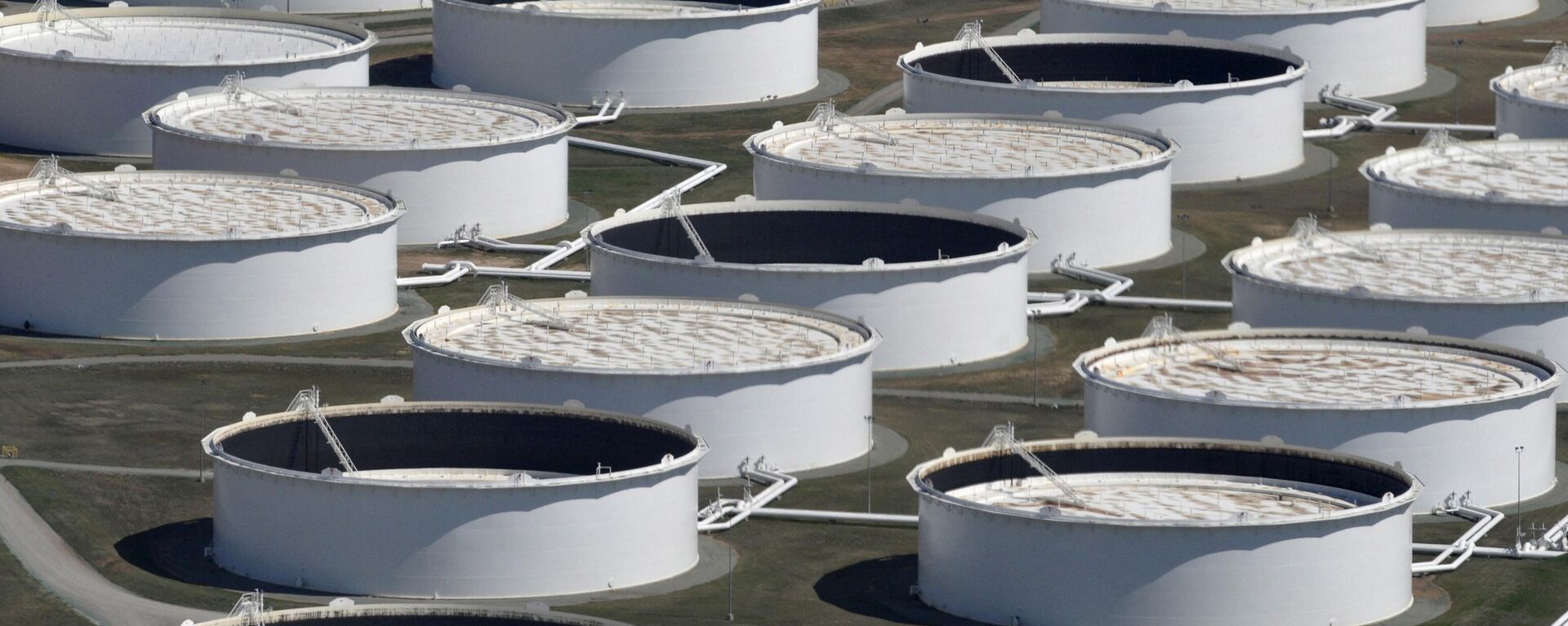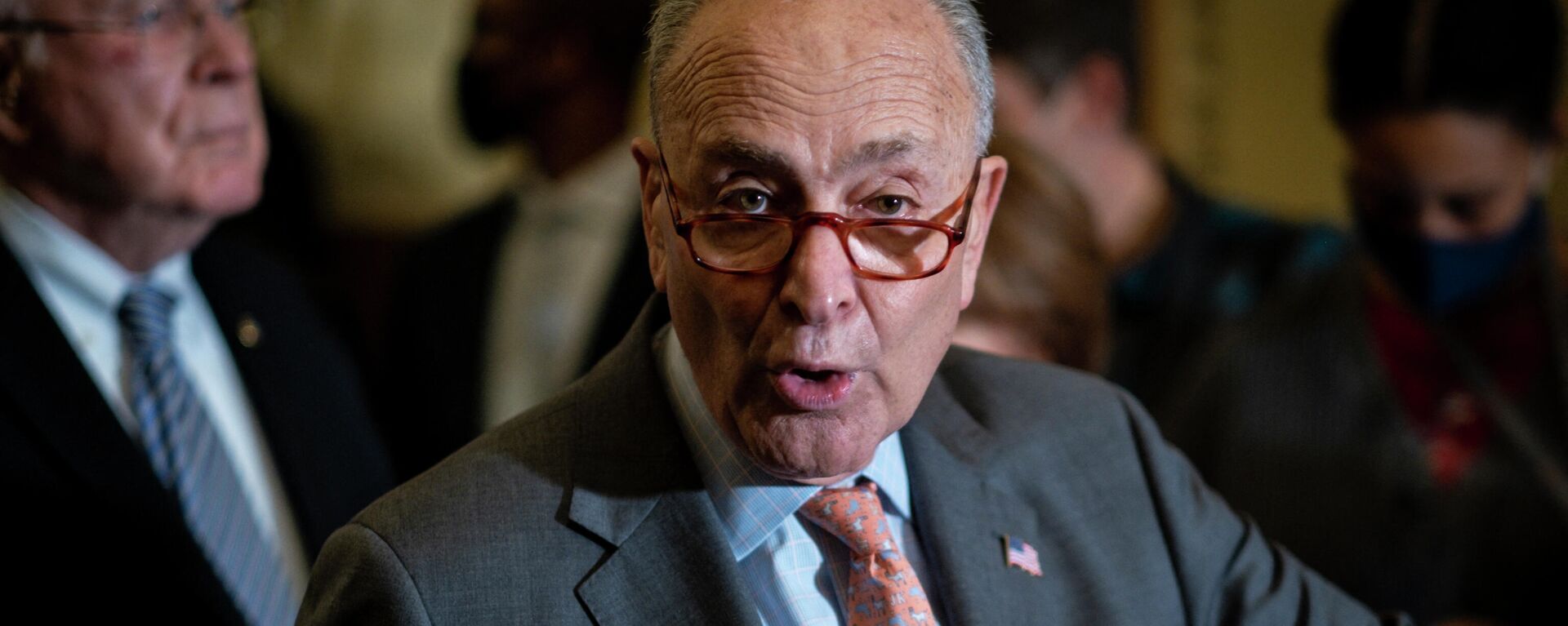https://sputnikglobe.com/20220330/oil-up-3-on-wednesday-based-on-talk-of-new-russia-sanctions-1094340551.html
Oil Up 3% on Wednesday Based on Talk of New Russia Sanctions
Oil Up 3% on Wednesday Based on Talk of New Russia Sanctions
Sputnik International
NEW YORK (Sputnik) - Crude prices settled up 3% on Wednesday as traders reacted to talk of the United States and its allies planning to impose new sanctions... 30.03.2022, Sputnik International
2022-03-30T21:11+0000
2022-03-30T21:11+0000
2022-03-30T21:11+0000
oil prices
biden administration
gasoline
us
oil producers
opec
russia
https://cdn1.img.sputnikglobe.com/img/07e6/03/1e/1094340503_0:334:3047:2048_1920x0_80_0_0_8475a1b881543f9576bc2a452508a841.jpg
The first weekly build in US gasoline and distillate inventories reported by Energy Information Administration (EIA) went largely ignored despite the bearish implications of a market potentially seeing demand destruction with pump prices at near record highs of above $4 per gallon.London-traded Brent, the global oil benchmark, settled the official session up $3.22, or 2.9%, at $113.45 per barrel. Brent fell 2% on Tuesday.New York-traded West Texas Intermediate (WTI), which serves as the benchmark for US crude, rose $3.58, or 3.4%, to settle at $107.82. WTI fell 1.6% in the previous session.The United States and its allies said they were planning new sanctions on more sectors of Russia’s economy, including military supply chains, in response to the country’s five-week long special military operation in Ukraine.Major oil producers in the OPEC+ alliance, which includes Russia, are likely to stick to their scheduled output target increase of about 432,000 barrels daily when the group meets on Thursday, reports citing sources familiar with the matter said.The 23-nation strong OPEC+ is determined to keep crude prices at or above $100 a barrel by sticking to monthly increments of about 400,000 barrels per day in production to ensure the market does not get flooded with supply.US stockpiles of gasoline rose by 785,000 barrels last week while that of distillates grew by almost 1.4 million barrels, the EIA said in its Weekly Petroleum Status Report published on Wednesday.Analysts polled by US media had expected a drop of 1.7 million barrels in gasoline inventories and a reduction of 1.55 million for distillates last week.Automobile fuel gasoline, also known as petrol outside the United States, is America’s most-consumed oil product. Distillates, which are refined into diesel for trucks, buses, trains and ships as well as fuel for jets, have been the strongest growth component of the US oil complex for months, seeing virtually non-stop inventory declines since early January.The build in gasoline stockpiles come as the national average pump price in the United States held at above $4.23 per gallon on Wednesday, just a dime below the March 11 record high of $4.33 reported by the American Automobile Association.The EIA also reported that crude oil inventories fell by almost 3.5 million barrels last week versus industry estimates for a drawdown of 1.02 million barrels.But a breakdown of the numbers issued by the agency showed that 3 million barrels came from the US Strategic Petroleum Reserve (SPR), suggesting that other sources of demand for crude accounted for just about half a million barrels.The Biden administration has been supplying refiners with loaned crude from the SPR for months in the hope that it will ultimately result in lower prices for both crude and finished products like gasoline and diesel. There has been negligible effect so far on crude prices from the government’s effort as refiners have been turning more products than they usually do at this time of year, resulting in extraordinarily high crude drawdowns.US refinery utilization was at a multi-week high of 92.1% last week, suggesting that refiners were churning out products at a faster-than-usual rate on concerns that the market may get caught with short supply later.
https://sputnikglobe.com/20220329/oil-prices-hit-2-week-lows-us-crude-breaks-below-100-support-1094304855.html
https://sputnikglobe.com/20220317/schumer-calls-on-us-oil-companies-to-testify-before-senate-amid-rising-gasoline-prices-1093944097.html
russia
Sputnik International
feedback@sputniknews.com
+74956456601
MIA „Rossiya Segodnya“
2022
Sputnik International
feedback@sputniknews.com
+74956456601
MIA „Rossiya Segodnya“
News
en_EN
Sputnik International
feedback@sputniknews.com
+74956456601
MIA „Rossiya Segodnya“
Sputnik International
feedback@sputniknews.com
+74956456601
MIA „Rossiya Segodnya“
oil prices, biden administration, gasoline, us, oil producers, opec, russia
oil prices, biden administration, gasoline, us, oil producers, opec, russia
Oil Up 3% on Wednesday Based on Talk of New Russia Sanctions
NEW YORK (Sputnik) - Crude prices settled up 3% on Wednesday as traders reacted to talk of the United States and its allies planning to impose new sanctions against Russia while the OPEC+ alliance of oil producers signaled it will not allow much new supply into the market.
The first weekly build in US gasoline and distillate inventories reported by Energy Information Administration (EIA) went largely ignored despite the bearish implications of a market potentially seeing demand destruction with pump prices at near record highs of above $4 per gallon.
London-traded Brent, the global oil benchmark, settled the official session up $3.22, or 2.9%, at $113.45 per barrel. Brent fell 2% on Tuesday.
New York-traded West Texas Intermediate (WTI), which serves as the benchmark for US crude, rose $3.58, or 3.4%, to settle at $107.82. WTI fell 1.6% in the previous session.
The United States and its allies said they were planning new sanctions on more sectors of Russia’s economy, including military supply chains, in response to the country’s five-week long special military operation in Ukraine.
Major oil producers in the OPEC+ alliance, which includes Russia, are
likely to stick to their scheduled output target increase of about 432,000 barrels daily when the group meets on Thursday, reports citing sources familiar with the matter said.
The 23-nation strong OPEC+ is determined to keep crude prices at or above $100 a barrel by sticking to monthly increments of about 400,000 barrels per day in production to ensure the market does not get flooded with supply.
US stockpiles of gasoline rose by 785,000 barrels last week while that of distillates grew by almost 1.4 million barrels, the EIA said in its Weekly Petroleum Status Report published on Wednesday.
Analysts polled by US media had expected a drop of 1.7 million barrels in gasoline inventories and a reduction of 1.55 million for distillates last week.
Automobile fuel gasoline, also known as petrol outside the United States, is America’s most-consumed oil product. Distillates, which are refined into diesel for trucks, buses, trains and ships as well as fuel for jets, have been the strongest growth component of the US oil complex for months, seeing virtually non-stop inventory declines since early January.
The build in gasoline stockpiles come as the national average pump price in the United States held at above $4.23 per gallon on Wednesday, just a dime below the March 11 record high of $4.33 reported by the American Automobile Association.
“It shows that high prices are doing their work in causing demand destruction to oil,” John Kilduff, partner at New York energy hedge fund Again Capital, said.
The EIA also reported that crude oil inventories fell by almost 3.5 million barrels last week versus industry estimates for a drawdown of 1.02 million barrels.
But a breakdown of the numbers issued by the agency showed that 3 million barrels came from the US Strategic Petroleum Reserve (SPR), suggesting that other sources of demand for crude accounted for just about half a million barrels.
The Biden administration has been supplying refiners with loaned crude from the SPR for months in the hope that it will ultimately result in lower prices for both crude and finished products like gasoline and diesel. There has been negligible effect so far on crude prices from the government’s effort as refiners have been turning more products than they usually do at this time of year, resulting in extraordinarily high crude drawdowns.
US refinery utilization was at a multi-week high of 92.1% last week, suggesting that refiners were churning out products at a faster-than-usual rate on concerns that the market may get caught with short supply later.



